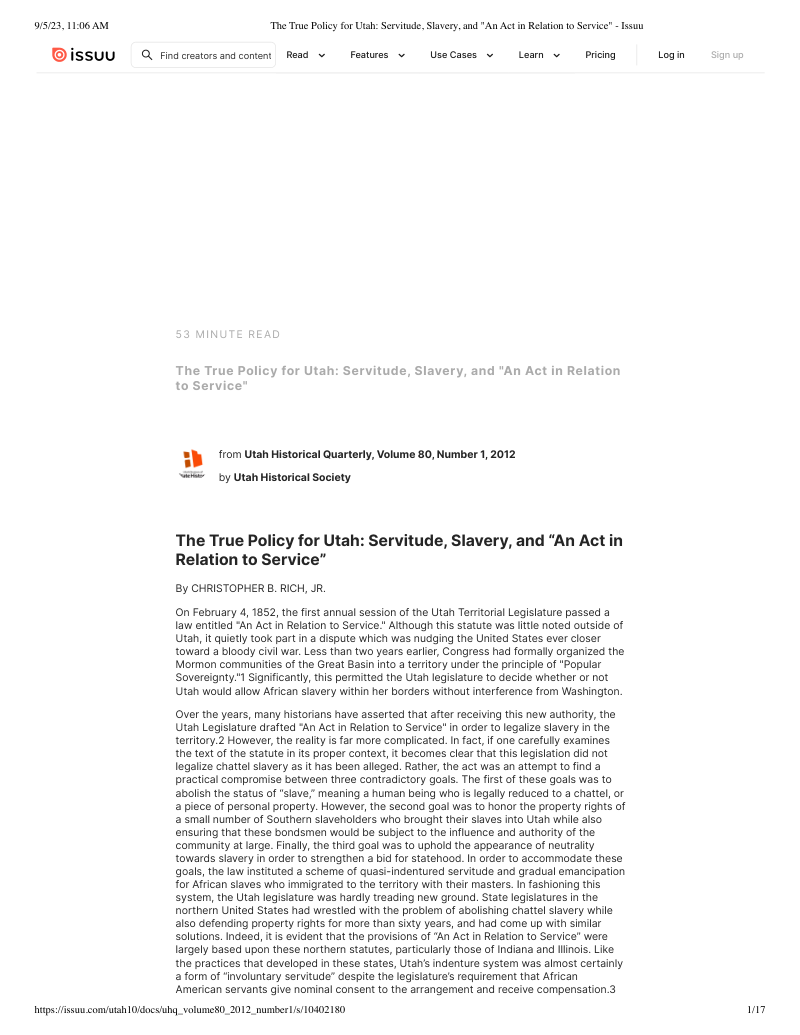Christopher Rich argues that Utah's servitude law was intended to end slavery.
- Type
- Periodical
- Source
- Christopher B. Rich, Jr. LDS
- Hearsay
- Secondary
- Reference
Christopher B. Rich, Jr. "The True Policy for Utah: Servitude, Slavery, and 'An Act in Relation to Service,'" Utah Historical Quarterly, Volume 80, Number 1, 2012, accessed September 21, 2023
- Scribe/Publisher
- Utah Historical Quarterly
- People
- Christopher B. Rich, Jr.
- Audience
- Reading Public
- Transcription
Over the years, many historians have asserted that after receiving this new authority, the Utah Legislature drafted "An Act in Relation to Service" in order to legalize slavery in the territory. However, the reality is far more complicated. In fact, if one carefully examines the text of the statute in its proper context, it becomes clear that this legislation did not legalize chattel slavery as it has been alleged. Rather, the act was an attempt to find a practical compromise between three contradictory goals. The first of these goals was to abolish the status of “slave,” meaning a human being who is legally reduced to a chattel, or a piece of personal property. However, the second goal was to honor the property rights of a small number of Southern slaveholders who brought their slaves into Utah while also ensuring that these bondsmen would be subject to the influence and authority of the community at large. Finally, the third goal was to uphold the appearance of neutrality towards slavery in order to strengthen a bid for statehood. In order to accommodate these goals, the law instituted a scheme of quasi-indentured servitude and gradual emancipation for African slaves who immigrated to the territory with their masters. In fashioning this system, the Utah legislature was hardly treading new ground. State legislatures in the northern United States had wrestled with the problem of abolishing chattel slavery while also defending property rights for more than sixty years, and had come up with similar solutions. Indeed, it is evident that the provisions of “An Act in Relation to Service” were largely based upon these northern statutes, particularly those of Indiana and Illinois. Like the practices that developed in these states, Utah’s indenture system was almost certainly a form of “involuntary servitude” despite the legislature’s requirement that African American servants give nominal consent to the arrangement and receive compensation. Nevertheless, it remained distinct from chattel slavery and a step forward in the gradual emancipation model.
The B. H. Roberts Foundation is not owned by, operated by, or affiliated with the Church of Jesus Christ of Latter-day Saints.

